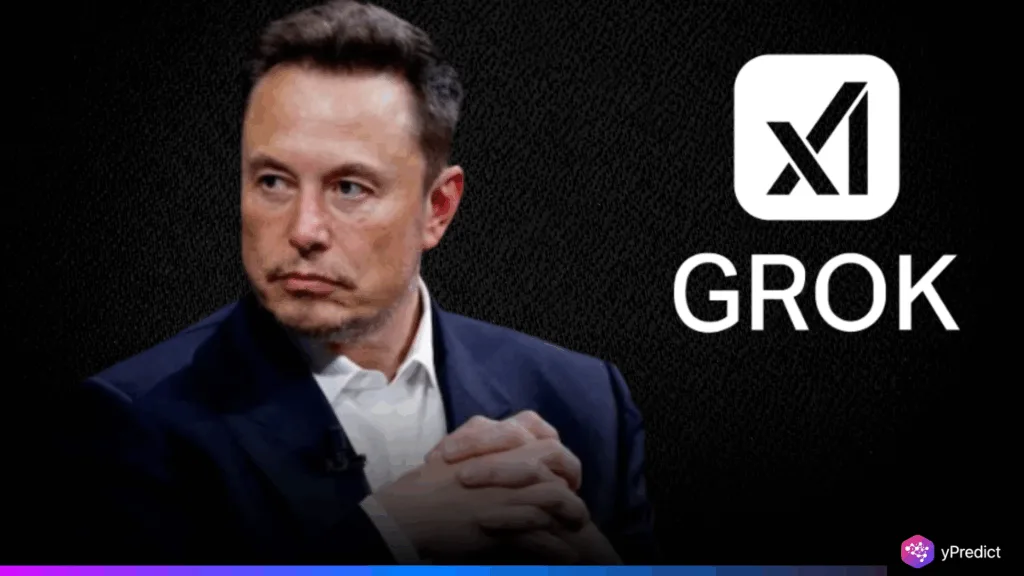
Elon Musk is raising the stakes in the AI arms race. In his latest announcement, the billionaire revealed plans to use Grok 3.5—an upgraded version of xAI’s chatbot—to rewrite the entire body of human knowledge. Musk believes that most existing AI models are trained on unreliable, biased, or incomplete data. To fix this, Grok 3.5 will consume content and actively correct, refine, and rebuild it using advanced reasoning and synthetic data. The goal: eliminate errors, fill knowledge gaps, and remove ideological distortions that plague current AI models.
Musk Slams Flawed AI Foundations
Elon Musk didn’t mince words when criticizing the data used to train today’s popular AI systems. He called much of it “garbage” and accused foundational models like ChatGPT of reflecting biased narratives. Through a series of posts on X, Musk said that Grok 3.5 will use its advanced reasoning skills to reprocess all available online knowledge, removing inaccuracies and adding missing facts. We will rewrite the entire corpus of human knowledge, adding what’s missing and deleting errors. Then retrain on that, Musk declared. This sharp critique underscores his belief that flawed data leads to flawed intelligence, regardless of the model’s power.
Grok 3.5 Will Rebuild, Then Retrain
Unlike traditional models that accept information as-is, Grok 3.5 will take a radical approach—edit first, then learn. The model will comb through existing datasets, identify inaccuracies, and rewrite information using internal reasoning mechanisms. After this clean-up, xAI will retrain the chatbot using this revised and corrected knowledge base. Elon Musk says this method will produce a more reliable AI grounded in truth rather than noise. He also hinted that Grok 3.5 may be called Grok 4, depending on the final build. Either way, the upgrade marks a bold shift in how AI systems are designed to think and learn.
Synthetic Data and Crowdsourced Facts to Train the Model
Synthetic data remains central to Musk’s strategy. Grok 3, released earlier this year, was trained primarily on synthetic datasets to avoid issues like hallucinations when AI generates false or misleading responses. Grok 3.5 will push this further by pairing synthetic data with user-submitted facts. Musk invited X users to contribute politically incorrect but factually accurate statements to help retrain the model. This crowdsourced data will feed into Grok 3.5’s revised training corpus, allowing xAI to refine its knowledge base from human and machine-generated sources. According to Musk, this dual-layered input will help build an AI that prioritizes logic and accuracy over popularity and politics.
Colossus Supercomputer Powers Grok 3.5’s Ambitions
Backing this transformation is xAI’s Colossus supercomputer—an engineering feat completed in just nine months. Powered by over 100,000 hours of Nvidia GPU processing, Colossus forms the computational backbone of the Grok series. It played a key role in Grok 3’s launch and is now tasked with handling the increased demands of Grok 3.5. The system’s speed and scale enable fast iteration and high-volume retraining cycles, critical for Musk’s mission to overhaul knowledge at scale. With Colossus, Grok 3.5 can process synthetic data, apply logic-driven editing, and retrain faster than conventional systems.
Elon Musk is not content with creating another powerful chatbot—he wants to rebuild the AI knowledge base from the ground up. Grok 3.5, powered by synthetic data and hosted on the Colossus supercomputer, is Musk’s answer to what he sees as an urgent problem: the AI world’s dependence on flawed and ideologically skewed data. By re-editing human knowledge before retraining, xAI hopes to create a more accurate, reliable, and unbiased model. The expected release of Grok 3.5 by the end of 2025 could mark a turning point, where AI no longer mirrors the internet blindly but actively reshapes it through reason. If Musk’s vision succeeds, Grok 3.5 could redefine not just chatbot performance but the very foundation of artificial intelligence.






